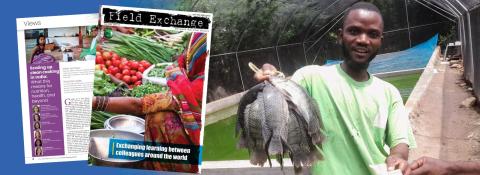Intimate partner violence and child stunting in South Asia
This is a summary of the following report: Lakhdir MP, Ambreen S, Sameen S et al (2024) Association between maternal experiences of intimate partner violence and child stunting: A secondary analysis of the Demographic Health Surveys of four South Asian countries. BMJ open, 14, 1, e071882. https://doi.org/10.1136/bmjopen-2023-071882
Women experiencing intimate partner violence (IPV) may face adverse health outcomes and behaviours during pregnancy, leading to unfavourable pregnancy outcomes. Physical abuse during pregnancy can directly result in injuries, impacting pregnancy outcomes, including miscarriages and maternal and foetal mortality. Women subject to IPV are more likely to miss prenatal check-ups, potentially resulting in adverse pregnancy outcomes such as low birthweight and preterm births. Maternal IPV is also linked to poor nutrition and inadequate weight gain during pregnancy, as well as increased stress and depression. These can indirectly affect maternal and neonatal outcomes such as foetal death, preterm birth, low birthweight, and small for gestational age infants. In turn, these outcomes may significantly impact a child’s early growth and physical development, potentially leading to wasting and stunting.
Researchers aimed to determine whether there was an association between maternal exposure to IPV – i.e. sexual violence, physical violence, or both – and child stunting, measured based on the height-for-age z-score of children aged 6–59 months. The authors used data from the seventh round of the demographic and health surveys in four South Asian countries (Pakistan, Nepal, India, and the Maldives). A Cox proportional regression method conducted separately on each country's data was used to estimate the association between maternal IPV and child stunting.
The prevalence of women who were ever exposed to IPV (since age 15) ranged from 10% (Maldives) to 31% (India). The burden of child stunting was the lowest in the Maldives (14%), followed by Nepal (33%), and then highest in both India and Pakistan (around 36%).
Although crude data showed a higher prevalence of child stunting in women who experienced IPV across all four countries, only India and Nepal demonstrated a significant association after adjusting for maternal age, education, number of children, household wealth ranking, and place of residence. In India, children whose mothers were exposed to IPV showed a 7% increase in the prevalence of moderate and severe child stunting (OR 1.07, 95% CI 1.01-1.14). In Nepal, severe stunting was strongly associated with the prevalence of physical IPV (OR 1.66, 95% CI 1.01-2.87). There were no other statistically significant associations that showed a higher prevalence of stunting among ever-abused women.
The study findings suggest that maternal exposure to IPV could be associated with child stunting. However, further research investigating the relationship between IPV and child outcomes, and using improved and advanced statistical analyses, is required. Further research may provide substantial evidence to enhance public awareness and potentially reduce the burden of child stunting in South Asian countries.


